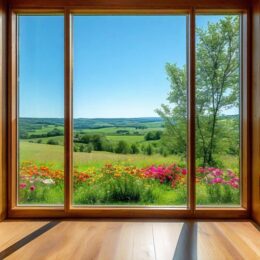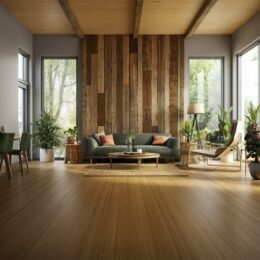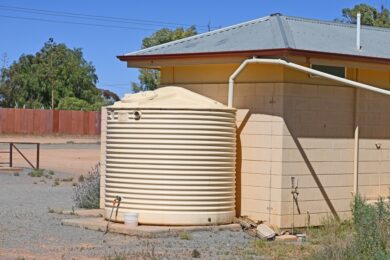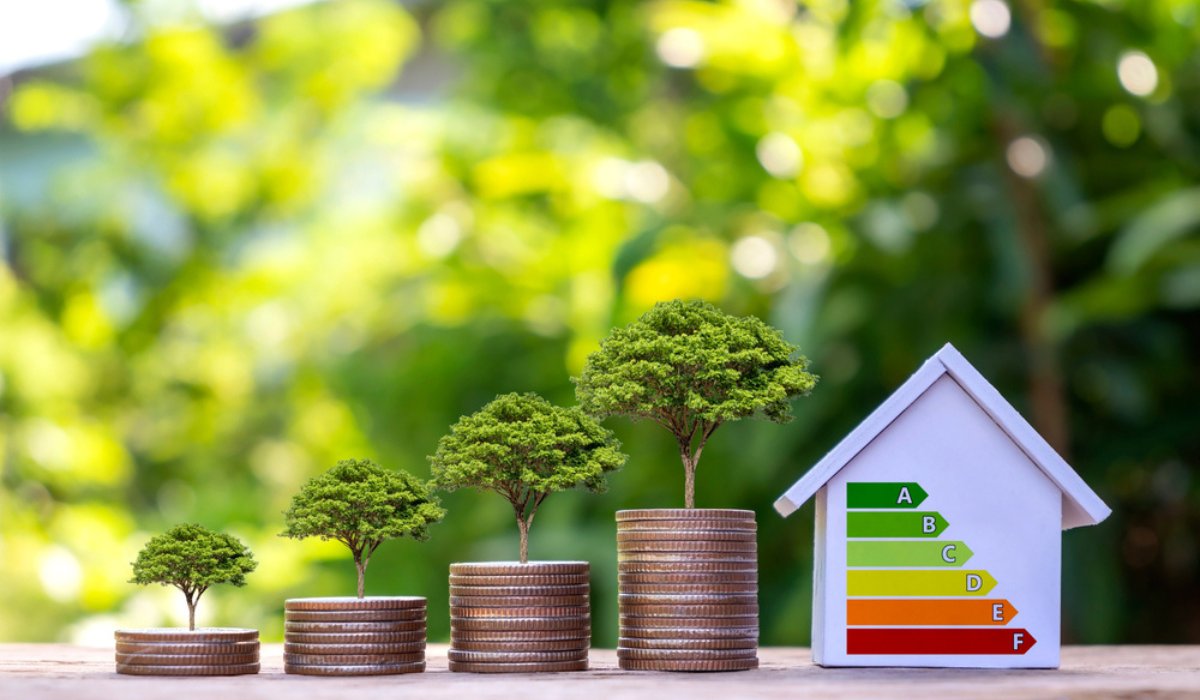Imagine waking up in a home that knows just how you like your morning—lights gently brightening, the temperature just right, and coffee brewing. But as you go on with your morning routine, there is a satisfaction in your mind and heart because you know that your house is using less energy and creating less waste as compared to others. Does that sound too futuristic? It’s actually possible today. An approach that manages the water running in the house, the electricity being consumed on a daily basis,and makes sure that the houses we live in are more eco-friendly and smart simultaneously. Creating a home that’s both smart and eco-friendly doesn’t have to be overwhelming or expensive.
A “smart-green home” is one such approach that blends both eco-friendly, sustainable design with modern, intelligent technology. Smart homes reduce environmental burden significantly by conserving energy and water, while also enhancing convenience and control through automation at the same time.
Benefits of a green home
Green homes offer more than just sustainability. They make everyday living better. With lower energy and water bills, cleaner indoor air, and natural light-filled spaces, they create a healthier, more comfortable environment. Let us have a look at how a green home benefits the home owner as well as the environment:
1. Lower bills and operating costs
No one likes huge electricity or water bills. Green homes are built to be super efficient, so including solar panels, smart lighting, and low-flow taps help cut down your monthly costs. It’s better for your wallet and the planet, making it a win-win situation.
2. Better air quality inside
A green home literally helps you breathe easier. With non-toxic paints, better airflow and cool indoor plants, the air indoors feels cleaner and healthier. It even prevents your family members with any related allergies from getting affected.
3. Naturally comfortable spaces
Ever walk into a room that just feels “right”? That’s what good design does. Green homes use natural light, cross-ventilation, and insulation to keep things cozy without cranking up the AC all day.
4. Good for the planet
Using less energy and water means you are doing your bit for the environment. Green homes are built to waste less, save more, and leave a smaller carbon footprint. It’s one of the easiest ways to live more sustainably, without a complete lifestyle overhaul.
5. Appreciating value over time
Even if you’re not thinking of selling anytime soon, green features actually increase your home’s value. In addition, they need less maintenance and repairs in the long run which means you save money now and in the future.
6. Tech-savvy and future-ready
Smart switches, energy alerts, automated fans Green homes are usually wired for the future with smart switches, energy alerts and automated fans. You can keep an eye on your energy use right from your phone and make your space smarter without lifting much more than a finger.
Ways to get your ‘smart-green’ home started
Think of a home where solar panels power your appliances, smart sensors manage water usage, motion-sensing lights regulate the artificial lighting in your house and natural airflow keeps rooms cool without an AC running all day. This is what a smart-green home in action is supposed to look like. With the right steps, you can build a space that’s comfortable, efficient, and good for the planet. Here’s how to get started on your journey to a smart-green home that works for you and the world around you:
Putting the sun to good use
As smart green homes evolve, the Sun’s role extends far beyond heat, offering clean energy solutions for modern, sustainable living. Here is how you can use the Sun’s scorching heat to power your green home:
- Maximising daylight by installing East and North-facing windows. This would allow consistent soft light during the day, thus reducing the need for any artificial lights, ultimately resulting in significant saving on electricity during the day. In a green home, windows shape your daily experience. Floor-to-ceiling glass floods living spaces with morning light, while clerestory windows brighten cozy corners without sacrificing your privacy. French doors open to garden breezes, blending indoors with nature. Thoughtful window design fills your home with natural light, creating a calm, inviting atmosphere while quietly lowering energy use. Not only this, such windows would brighten up your kids’ room, thanks to the abundant light coming in.

- Using modern solar heaters with backup heating and temperature control can fulfill daily hot water needs for bathing, cooking and cleaning. These are already widely used in comparatively colder states like Himachal Pradesh and Uttarakhand where solar water heaters with backup systems are delivering real results. Over 1,200 rural “Solar Hamam” units have been installed in these regions, each typically providing 15 to 100 litres of boiling hot water within 30–35 minutes, thus reducing the use of firewood by 30–45% and saving up to 1.5 tonnes of CO₂ per household annually.
- Solar backed systems can manage and run all home lighting along with essential appliances like fans, TVs, washing machines, etc. This could be done both, by running the appliances separately on solar batteries or using installed solar panels.
- In addition, the PM Surya Ghar: Muft Bijli Yojana, a flagship initiative launched by the Government of India in February 2024 to promote rooftop solar energy adoption among residential households makes green homes more accessible, thanks to the subsidies that the scheme entails. These concessions include reduction in costs of installing rooftop solar panels, enabling households to generate clean electricity. It reduces energy bills, supports smart systems, and encourages a shift toward sustainable living, making solar power a practical foundation for eco-friendly, self-sufficient homes.
Using the right paints
Most paints consist of substances that could be potentially dangerous to both the people living in the house and to the environment. Such paints are often referred to as VOC-paints (Volatile Organic Compounds).
These paints consist of substances like Benzene, Ethylene Glycol, Methylene chloride and Hexane among others which are responsible for respiratory irritation, headaches and other issues. Thus, it is often recommended to use “Low” or “Zero” VOC- paints. Alternatively, milk paints, ceramic paints, lime-based paints and organic paints are recommended to be used instead of VOC- paints.
Using green construction materials
Locally sourced and sustainable materials like fly ash bricks, lime plaster, terracotta tile, bamboo and recycled wood instead of traditional POP (Plaster of Paris) is a good alternative. It ensures less use of synthetic materials (PVC or cement-based paints).
In addition, traditional Indian designs like jaalis (latticed screens) and courtyards support would also be a great option for allowing natural airflow and passive cooling, thus reducing the dependency on air conditioners. This is especially useful in warmer regions of the country like Rajasthan or Gujarat.
Bamboo: The all- rounder

Bamboo is one of the most used materials to build a green and eco-friendly home due to its ability to be put to a diverse range of uses.
- Bamboo has natural insulating properties which allows it to regulate indoor temperatures in hot and humid regions of India like Chennai or Kolkata. Woven or open designs made using bamboo serve ideal for cross-ventilation and breathable walls. For instance, bamboo mat or reed ceilings help keep rooms cool in summer, reducing AC usage.
- Treated bamboo can be used for vanity counters, storage cabinets, and even bamboo flooring because it is water resistant. While planning to construct bathrooms in your smart and green home, bamboo can be used for sensor-based organisers, touchless towel holders, or smart storage units.
- From the construction point of view, bamboo can be used for walls, columns, beams, and roofing in eco homes. Today, in modular housing, bamboo-reinforced concrete is also used. This serves as a low-cost alternative in rural and semi-urban India.
Smart management of water resource
In a green home that is also smart, management of water around the house could be done in many ways like:
- Greywater recycling: Reusing lightly used water from baths, sinks, and washing machines for gardening or toilet flushing is called Greywater Recycling. This method reduces fresh water demand by up to 40%. To make this method more smart and efficient, filtration units with automatic cleaning alerts can be installed.
- Smart water meters: Installing water meters to track real-time water usage per area (kitchen, bathroom, garden), identify usage spikes, leaks, and wastage early and encourage water budgeting and conservation habits can be a good technique to regulate water usage. For instance, many smart housing societies in Bengaluru and Pune are using RFID (Radio Frequency Identification) or app-connected meters to bill water by actual use.
- Using low-flow faucets: Low-flow faucets are water-efficient fixtures designed to reduce water usage without compromising performance. They use about 4 to 6 litres per minute as compared to 10 to 15 litres in standard faucets. By maintaining good pressure while using less water, they help save up to 10,000 litres annually, thus maintaining good pressure while less water. All in all, they are a smart, eco-friendly choice for sustainable water management in green homes.
- Rainwater harvesting: In a green home, rainwater harvesting turns a natural resource into a practical everyday solution. By collecting rain from the rooftop and storing it in tanks, you can save this water for an array of uses including using this free water for gardening, washing floors, or flushing toilets. As a result, it reduces the dependence on municipal water, cuts bills, and makes the home more resilient during dry spells. Especially in cities facing water shortages, rainwater harvesting acts as a simple and eco-friendly way to live more sustainably, making every drop count in your ‘smart-green home’.

Smart lights
Finally, using motion sensor lights in areas of the house like the bathrooms and the hallways would help regulate the amount of electricity consumed for these lights would automatically switch off once their sensors detect that there is no movement in the room.
In a green home, smart lights do more than just brighten rooms, they help families live more consciously. With home automation, you can get gentle reminders or energy alerts when lights are left on too long, making it easier to cut waste. Motion sensors switch lights off when no one’s around, and placing leafy indoor plants near windows not only freshens the air but keeps rooms cooler naturally, reducing the need for fans or AC. It’s a thoughtful blend of tech and nature working together. This way, using smart lights in areas where lights are used comparatively less would reduce the overall amount of electricity used.
Using plants as natural toxins
The indoor plants in your green home can and are more than just decorative pieces. Indoor plants act as quiet partners in creating a healthier living space.
Plants like snake plants, spider plants, and peace lilies help purify the air by absorbing common toxins such as formaldehyde and benzene, which are often found in household products. They also release oxygen and can naturally cool down a room, reducing the need for fans or air conditioning.
When placed near windows, they thrive on sunlight while connecting your home to the outdoors. Beyond their environmental benefits, plants bring a sense of calm and warmth to everyday spaces. For families looking to live more sustainably, adding a few houseplants is a simple, beautiful step toward a greener lifestyle.
Traditional ways of keeping a home ‘green’ combined with today’s technological tactics can thus result in a cleaner, smarter and greener space for people. States where the pollution level remains tentatively high could benefit by initiating the idea of greener and smarter homes, even if it is at a small scale. Whether renovating a city apartment, building a new home in a Tier-2 town, or planning a rural eco-retreat, every small decision, from using bamboo panels to installing smart lighting or recycling greywater, would eventually contribute to a healthier planet and a lower monthly bill.
Thus, a smart-green home is not just an upgrade but a commitment to a better way of living. It is a way that balances comfort, conscience, and climate action. The future of housing in India is not just about bricks and bandwidth anymore, but about wisdom, innovation, and sustainability woven together.
FAQs
What are the challenges that one faces while opting for a green home?
Green homes can involve higher upfront costs, limited availability of sustainable materials, and the need for expert design, though long-term savings and environmental benefits often outweigh these challenges.
How much can I save on energy bills with a green home?
Depending on the features, green homes can reduce energy costs by 20-50%, thanks to solar power, efficient appliances, and better insulation.
Are green homes suitable for all climates?
Yes. Green homes use climate-responsive designs including shading in hot areas and insulation in cold ones to maximize comfort and efficiency everywhere.
| Got any questions or point of view on our article? We would love to hear from you. Write to our Editor-in-Chief Jhumur Ghosh at jhumur.ghosh1@housing.com |







